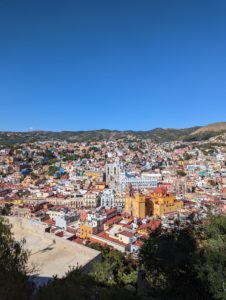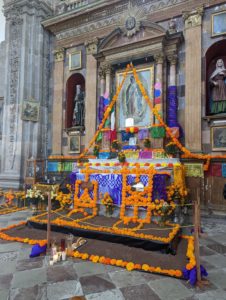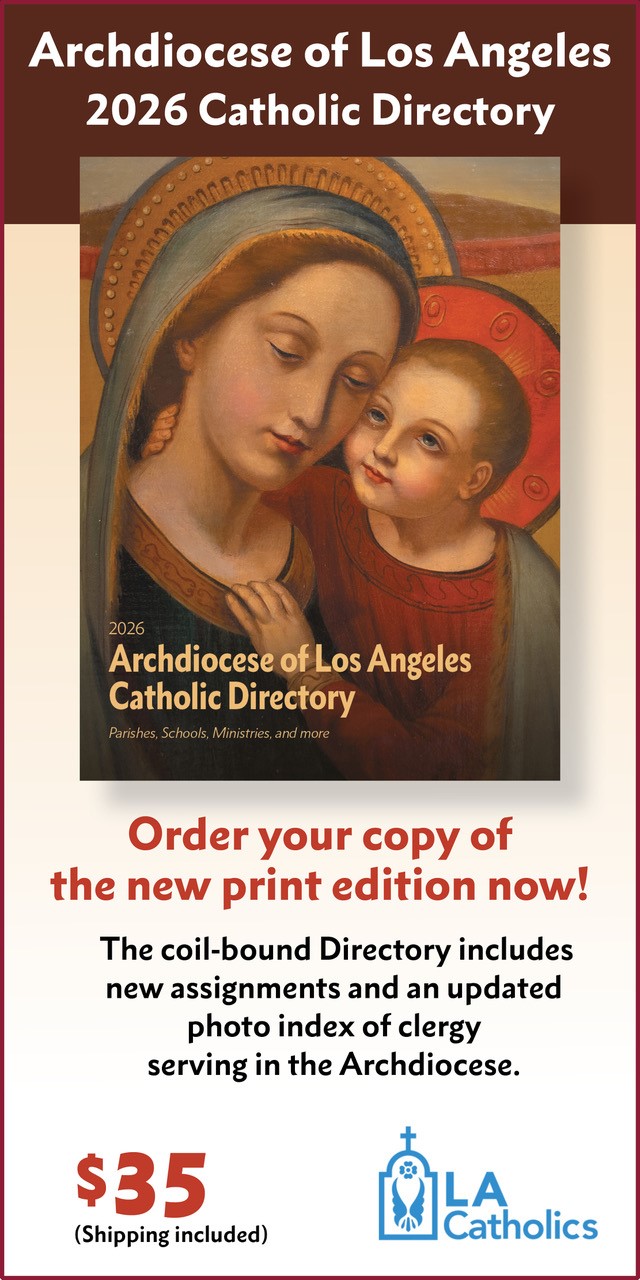I will tell you what I saw after I walked through a wide-open church doorway in Guanajuato, Mexico.
But first: Why was I there at all?
The usual: impressions, hints, intuitions, opportunity; this compulsion to research that seizes me, that brings me to a sense of inevitability. I effectively brainwash myself. How can I not go now?
Mexico and Central America had been places of interest in this house for a while. We’d been to Mexico City and the Yucatán, and the youngest and I had spent time in Guatemala and Honduras. So yes, I’d mentally explored Mexico now and then, as I would toy with where next?
I’d seen images of this place over the years: a city spilling into a valley on steep hills, colorful buildings, including pink, yellow and orange churches, domes rising above the sea of pastels. But I could never remember its name. For the longest time, I thought it was Guadalajara and then I’d look up Guadalajara and no, that wasn’t it. Did I imagine it?
I searched “colorful city valley Mexico” — and there it was. Guanajuato.
My youngest son, the one whose departure had emptied my nest, had a fascination with Mesoamerican history and culture. In fact, his little 8-year-old self had inspired our first vacation trip to Mexico almost a decade before and then our journeys to Central America. I’ll never forget the sight of him standing in the ballcourt at Chichen Itza on that first trip, floppy explorer hat on his head, marveling at the moment, then doing a little jig: “I can’t believe I’m really here!” he cried.
So when I randomly, oddly, settled on Guanajuato, I called him, in college way out west. “Would you be mad,” I ventured, “if I went to Mexico for Day of the Dead stuff — without you?”
He paused. “Me? Mad? No … not really. Maybe.”
And then, a deep sigh, in jest. I think.
And I did miss him, and knew, once I got there, that he would have enjoyed it. The others would have too, and I missed them. This is life now, pretty much all the time: glad to just be here on the planet, not sorry to be alone because external solitude aligns perfectly with my inner essence, a little relieved not to have to take others’ needs into consideration in planning, but also at a loss of how to do this travel thing if I’m not constantly on the lookout for the teachable moments.
Travel reveals the bigness of the world, but I don’t think I’ve taken a trip where I wasn’t startled by its smallness. In the bed-and-breakfast in this city that no one I knew had ever been to, this is who sat at the breakfast table: A couple who lived a little over an hour from me in the state of Alabama. Another couple who lived in the same city as one of my older, married kids. I even knew their neighborhood as they began to describe it, before they named it. Finally, there was a younger couple, Utah natives, who’d been in my city for work two weeks before this moment.
“You all sure like football down there,” the young man said.

I stayed a week, that last week of October. I visited churches and museums; I walked the winding stone streets lined with ribbons of colorful homes. I panted up the million stairs to the B&B at the top of the hill when I missed the funicular or the line was too long. I ate many tacos and enchiladas cooked in front of me on the street. I watched parades for Day of the Dead and processions of little saints on All Saints’ Day. I hiked to a cave with a statue of St. Ignatius in it and then beyond that cave to the formations they call “la Bufa,” high above the city.
I was listening to music, which wasn’t hard because it was everywhere outdoors, mariachi bands competing in front of the restaurants at night, roving bands of costumed “callejoneadas” (“Alley Performances”) leading tours at night were a normal part of life in Guanajuato, but this week there was more.
This week, besides Dia de los Muertos, Guanajuato was hosting its big music and arts festival called the “Cervantino” festival, named for Miguel Cervantes, who, along with his creation, is a very big deal in Guanajuato. You’ll run into a few statues of Don Quixote, one quite large. There’s a Don Quixote museum. You are wondering why, naturally.
Eulalio Ferrer, who was fighting on the Republican side in the Spanish Civil War, grew weary of fighting and escaped to France. In a refugee camp, he made a trade: some tobacco for a book. The book was “Don Quixote,” and reading it changed his life. After the war he ended up in Mexico, and, in gratitude to Cervantes, made Guanajuato a center for study and celebration, including this music festival, which brought in artists like the Los Angeles Philharmonic (I couldn’t get tickets) and The King’s Singers (got tickets) playing in the gorgeous, jewel box Teatro Juárez.
I was hearing this music, looking for tacos and deals on silver, leather and ceramics. I was observing the way people lived in this valley; I was taking in the colors. I was thinking about the silver mining that flourished and provided a great proportion of the world’s silver for a time, exploited and enslaved the locals, and then eventually collapsed. Contemplating, as one does when one encounters history — if one is honest — the beauty born from pain and sin, just like the rest of life. It was thought-provoking, lovely, and intriguing. I was glad to be there, to be able to do what I wanted. I was missing my kids, feeling grateful, feeling guilty. The usual.
All the while, always on the lookout for the open church door. “I just want to pop in here for a second,” is what my kids are used to hearing, the minute a dome or steeple comes into view on our travels. As is usually the case, in Guanajuato, a few were locked unless it was Mass time, and I never could get a look. But the large churches were usually open all day, and something was often going on.
The “Templo de la Compañía de Jesús Oratorio de San Felipe Neri” was built by the Jesuits, dedicated in 1765. The Jesuits were kicked out of Mexico, and at some point later, the Oratorians, an order started by St. Philip Neri, took it over and maintain it today, a massive presence settled into a corner down from the university. The pale pink baroque facade rose high above, the open doors stood well above street level, at the end of a set of stairs. Thursday afternoon was a good day to step through those doors.
Inside were all the statues you’d expect lining the walls: Joseph, Martin de Porres, Ignatius Loyola, and their friends. One tableau in particular got my attention.
All the figures were dressed, as they usually were there, in real clothes made of shiny fabric. In another church, I had contemplated the crucified Jesus in a pink, gold-trimmed skirt. OK, half-tunic, but the effect was: pink skirt.
Here, the Virgin wore white and blue. A crown was on her head and she cradled Jesus in her left arm. With her right hand, she was grabbing the arm of a smallish man, hauling him upward, beyond the darkness below and especially away from a dragon’s jaws. Another man half-knelt at Jesus’ side. He offered the child a basket full of hearts: plump, burnished red, topped with flames. Jesus has picked one out and held it up, staring at us. Does this belong to you?
A low stage had been placed in front of the sanctuary. Images flashed on a large screen: nature, manufacturing, the stars — and a man working on a large set of electronic instruments. Technicians walked around the church, listening and moving speakers. The space filled with reverberations, whooshes, beeps, and taps from the musician with his machine.
A man carrying a couple of cases entered the space and sat in a pew next to the stage. He took out one flute, then another. He began playing, listening and tuning. Mellow tones joined the human voices and the electronic whines and buzzes. There would be a multimedia performance of some kind later, part of the festival.
On the right side of the church, small groups conferred, pointed, and worked. They draped garlands of marigolds — flowers whose fragrance attracted the presence of the dead — over side altars. They placed photographs, they hung blue, yellow, red, and green cutout panels, they arranged candles.

A group of schoolchildren filed in, led by chaperones and teachers, trailed by two priests in religious habits. The kids were taken immediately to view the tiny art museum in the space behind the main altar. The priests remained in the body of the church. They walked around, looking at the statues and craning their necks at the dome. They paused, hands behind their backs, watching and listening to the musicians on the stage.
Midway up the tiered wall behind the altar, two men tended to even more flowers — marigolds, of course, but also yellow and burgundy blooms, with a spray of white, arranged on steps high in the air, in space between the tabernacle and the statue of St. Jude.
The whole time, a group of a dozen men and women sat in the front pews at the edge of the stage, where images coursed on the screen and the electronic musician fiddled with his dials and the flautist played. They held booklets and prayed aloud. At times one of them read a passage or a prayer, and then it was time for them all to pray together, aloud. Their voices blended into the rest of the noise inside, but sometimes there were spaces, brief pauses, and then the prayers, echoing off the stone, were all you heard. I sat there for probably close to an hour, watching, listening.
It wasn’t the manicured, curated space of a North American church building. It hummed, and it was thick with the sacred living in stones and wood shaped by human hands and choices. It was complicated because, well, it is.
The people who worked, played, wandered, practiced, and prayed that Thursday afternoon? There was no single reason for what anyone was doing — on the surface at least. They were here to earn some money, to honor the dead, to practice their craft, to see the sights, to fulfill a duty, to learn something, because they were tagging along, because they were curious, because they just needed some quiet. Praying hearts that day that had landed in that basket for countless reasons: habit, gratitude, fear, love, desperation, sorrow, confusion.
On the ground near the Jesus-plucking-hearts-from-the-basket tableau, there stood a small glass box. In the box was a painting representing the Trinity: Jesus on the cross, with white-bearded God the Father, arms outspread, over him, and the dove of the Holy Spirit underneath.
As I sat there, an older man walked by this glass box on his way out of the church. He stopped in front of it. He touched the box with his right hand, then reached back, and touched his left shoulder blade. He touched the box again, kissed those fingers, bowed, and then went on. A private ritual gesture? A prayer for healing? Gratitude?
The afternoon wore on. The place had been standing before I arrived. The flower-arranging, the learning, the creating, the tensions, the working, the praying — it would all continue after I walked back out the door.
And it was time for me to do that. There were sights to see, tacos to eat, “cerveza” to drink on this warm afternoon.
So I’d leave, but in a sense, of course, I wouldn’t. It was there, it was everywhere, because that’s what Jesus had sent his friends out to do as we hear and take to heart during the Easter season — to take him, his body everywhere, to plant, to grow, to build: that busy, fascinating place, that place overflowing with the sacred made visible by weak, sinful human hands, those doors wide open to the passing world and all the curious, pained, joyful, confused seekers who lived in it. That place, those doors. That church.

